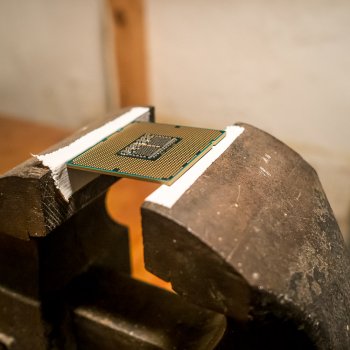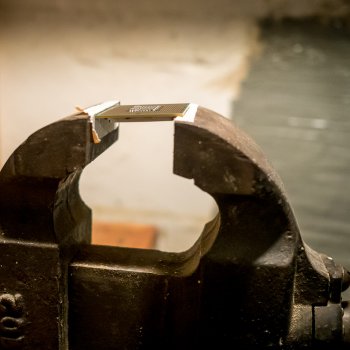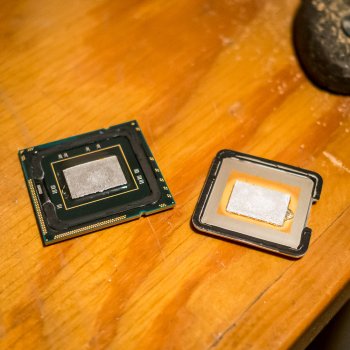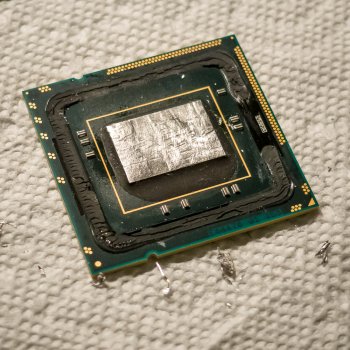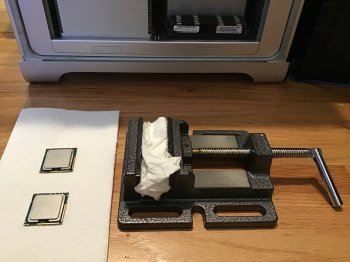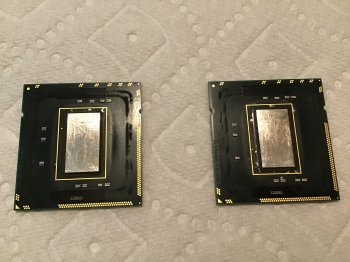Hi,
I'm experimenting with de-lidding a pair of (5677) processors for a Mac Pro I have. I decided to experiment with the "vice method" on an old processor I had left over from another upgrade.
The de lidding with the vice went really smoothly....the top seemed to slide over a bit at first and then with a soft pop, it just fell off.
Now I'm unsure as to how to clean up the processor properly. I tried scraping off the solder with a plastic card, but it's not smooth.. If I used sandpaper or something I'm afraid I'd damage the pins around the edges?
Any suggestions for what to do here?
Thank you!
![20190130_delid_003.jpg 20190130_delid_003.jpg]()
![20190130_delid_006.jpg 20190130_delid_006.jpg]()
![20190130_delid_007.jpg 20190130_delid_007.jpg]()
![20190130_delid_008.jpg 20190130_delid_008.jpg]()
![20190130_delid_012.jpg 20190130_delid_012.jpg]()
I'm experimenting with de-lidding a pair of (5677) processors for a Mac Pro I have. I decided to experiment with the "vice method" on an old processor I had left over from another upgrade.
The de lidding with the vice went really smoothly....the top seemed to slide over a bit at first and then with a soft pop, it just fell off.
Now I'm unsure as to how to clean up the processor properly. I tried scraping off the solder with a plastic card, but it's not smooth.. If I used sandpaper or something I'm afraid I'd damage the pins around the edges?
Any suggestions for what to do here?
Thank you!
